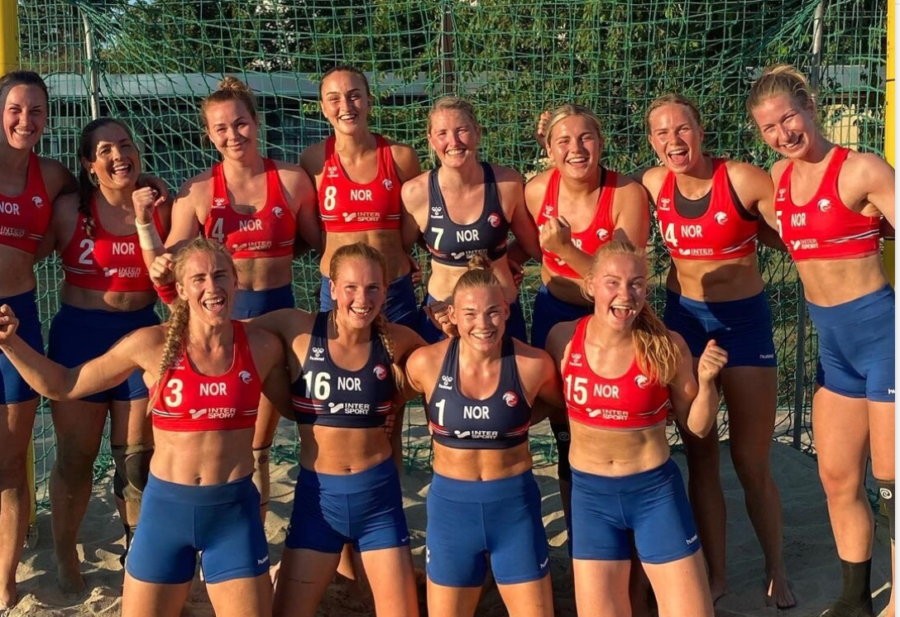The Plight of Female Athletes, from L-S to the Olympics
Next time you find yourself in a department store, take a second to browse through the children’s section. Usually, it will be separated into girls and boys. For boys, the general theme is superheroes, dinosaurs, and sports. For girls, princesses, ponies, and friendship. There’s nothing wrong with girls liking pink or princesses, and there’s nothing wrong with boys playing with dinosaurs. However, it isn’t any secret that boys are more encouraged to be athletic than girls. The evidence is right there: a baby boy’s onesie that reads “born to play baseball.” These occurrences seem like no big deal, but it speaks to a larger cultural attitude. From the time we are toddlers, we learn gender roles. There is an unsaid rule that you can be good at anything, but only successful at an activity that lines up with traditional gender expectations.
L-S psychology teacher and rugby coach, Ms. Hodin, explained why sports matter from a psychological perspective. “Self-efficacy, believing in your ability to achieve your desired outcome, is really important in terms of mental health and a growth mindset. And I think sports allow you to do that,” she explained. Sports can help people grow accustomed to losing at times. According to Ms. Hodin, one’s change in mindset can “Address a sort of perfectionism that sometimes young people, and especially young women, have. There is that culture of social media and having to look a certain way and get certain grades. Just by being on a sports team, there is collective loss, where you think ‘okay what can we learn and how can we move forward.’” In Hodin’s role as Safe Schools Coordinator, she sees firsthand how team membership can have a positive impact on self-esteem: “You see that you’re more than just your brain or test scores or academics.” From her observations as a women’s rugby coach, Ms. Hodin described the community-building power of teams. “Through sports, students from all different parts of the building and all different social groups build lifelong bonds, so I think it’s really important that that’s available to women just as much as it’s available to men.”
In college, Hodin played on the women’s ice hockey team. The team was started soon after Title IX, the legal code protecting people from sex-based discrimination in education programs and activities. When Title IX first passed, many women who wanted to play sports had new opportunities. Ms. Hodin described how, because the women’s team was so new, it was “like The Bad News Bears, some of our players couldn’t skate.” Playing hockey was an important part of Ms. Hodin’s college experience. “Not only did it help me blow off steam because the academic load was really stressful, but it also pushed me out of my comfort zone,” she explains. When women’s sports are supported it can have a positive, lifelong impact on players.
Though women’s participation in college sports has increased since Title IX was passed, scholarships for female athletes still lag behind. Pre-Title IX, 15% of NCAA athletes were women, while today they represent 44%. However, 88% of all athletic college scholarships are awarded to men.
This pay gap also exists for professional athletes. You may remember 6 years ago when the USA women’s soccer team sued for equal wages. Their court case just passed this year, with a 24 million dollar settlement and an agreement for equal pay and bonuses to the men’s team going forward. Despite this historic change, many other sports still have a gender wage gap. The clearest example is basketball. Top-earning NBA players earn around 50 million dollars a year from salaries alone. With endorsement deals, popular NBA players can double their salary. Meanwhile, the best-paid WNBA players make around 200 thousand dollars per year.
Challenges for female athletes don’t end with pay. At the Tokyo Olympics, Norwegian beach volleyball players were fined $50 per player for wearing spandex shorts instead of the revealing and uncomfortable uniform bikinis that were provided. If the men’s Olympic beach volleyball teams are not impeded by wearing loose shorts and jerseys, then why do female athletes have to wear revealing outfits to play? Double standards are rampant in sports and often go unnoticed. The Norwegian women’s team was able to bring attention to the misogyny with their simple protest of wearing what they were comfortable in.
Students Together Empowering Women (STEW) is an L-S club dedicated to gender equality. Noticing the cultural trend of gender inequality in sports, we had a conference last spring with athletes from women’s teams at L-S to see how these issues affect high schoolers. On the L-S Warriors Twitter page, for example, most of the mentions we tracked were for football and boys’ hockey. The girl’s hockey team received about half the mentions that the boy’s team did.
When female athletes at the conference were asked why their sports mattered to them, their reasoning was very similar to the psychological benefits described by Ms. Hodin. They described improved confidence, leadership skills, connections with teammates, and a strong sense of community. Overall, people of all genders should be systematically supported and have equal access to the copious benefits of sports, from L-S to the Olympics.







